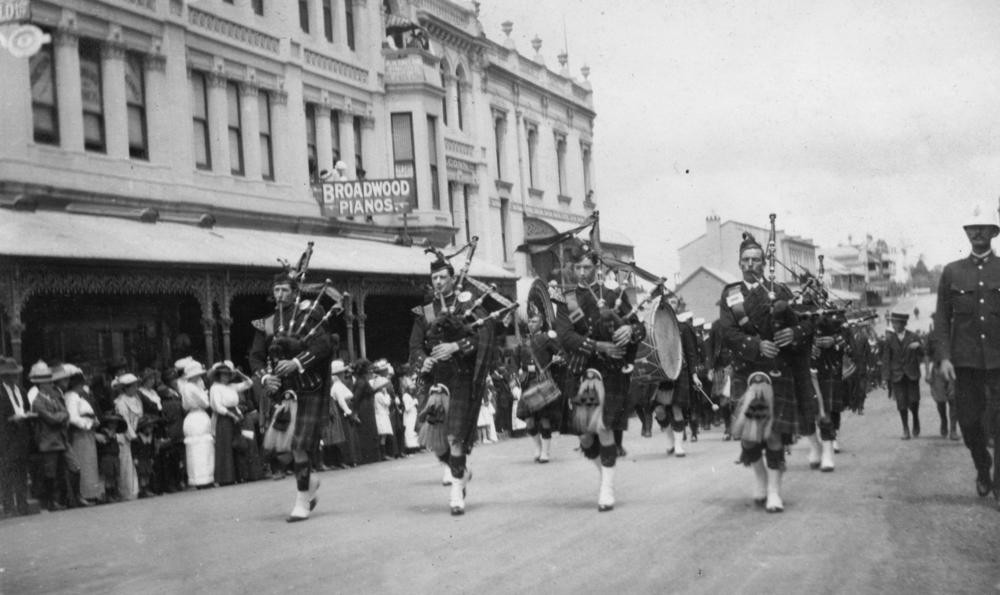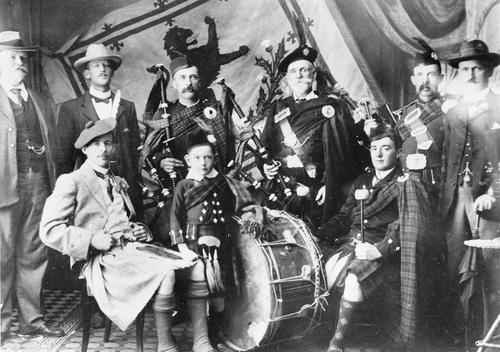Tartan is a pattern consisting of criss-crossed horizontal and vertical bands in multiple colours. Tartans originated in woven wool, but now they are made in many other materials. Tartan is particularly associated with Scotland and Scottish kilts almost always have tartan patterns.
International Tartan Day is held in July and usually coincides with the anniversary of the repeal of the 1747 Act of Proscription that banned the wearing of tartan. Tartan Days typically have parades of pipe bands, Highland dancing and other Scottish-themed events. It is also a day when our very own “Queensland” tartan will be on display.
The 18th international Tartan Day will take place in King George Square, Brisbane, on the 5th July 2014.

Scottish pipe band in a military parade Brisbane, ca. 1916
The two images displayed are from the collections of the John Oxley Library of a Scottish pipe band in a military parade in Brisbane, ca. 1916 and this lovely image of a group of unidentified Scotsman of the Caledonian Society at Warwick.

Unidentified Scotsman of the Caledonian Society at Warwick
In 1995, Mr Jack Allen, a Bundaberg cane farmer and renowned weaver designed a tartan for Queensland. This unique tartan, called " The Queensland Tartan", was four years in the planning before the finished product was produced. The colours, pattern and overall design of this tartan were created using seven basic colours to depict the State of Queensland and the theme of our winter. An article can be found in the Sunday Mail on the 19 November 1995, showcasing this new creation. The Scottish Tartans Society welcomed this new design and praised the work of Mr Allen, accepting his design and adding it to their register of cloths.

Queensland Tartan, designed by Mr Jack Allen in 1995
Colours:
- White represents the small amount of cloud in the winter time
- Azure represents the clear blue winter sky
- Royal blue represents the Coral Sea, blue in Hervey Bay, Whitsunday Passage and Hinchinbrook
- Yellow represents the tropical beaches of Queensland, sun and sand
- Green represents the mountain forests, hardwood forests, pine forests, the grazing fields and farms
- Lilac represents the flowers of the sugar cane
- Crimson represents the State’s floral emblem, the Cooktown Orchid.
Comments
Your email address will not be published.
We welcome relevant, respectful comments.